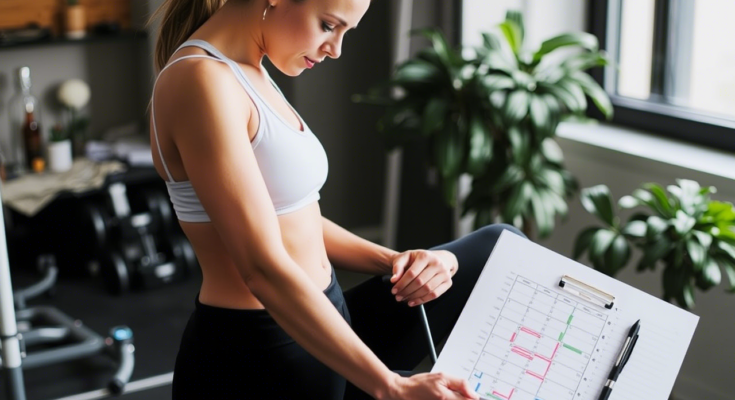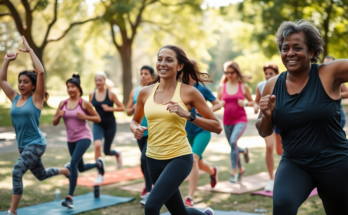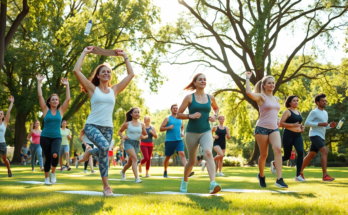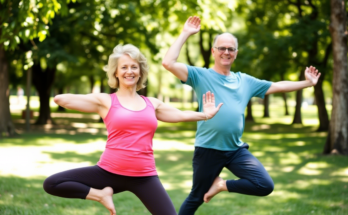Staying active is a lifelong commitment that pays dividends in physical health, mental well-being, and overall quality of life. However, fitness needs evolve as we age, requiring tailored strategies to match our changing bodies and lifestyles. Whether you’re a teenager just starting your fitness journey or a senior looking to maintain Mobility, this guide offers practical tips to help you stay active through every stage of life.
Why Fitness Matters at Every Age
Regular physical activity is one of the most effective ways to prevent chronic diseases, boost mood, and enhance longevity. It strengthens muscles, improves cardiovascular health, and supports mental clarity. The key is consistency—finding and adapting activities you enjoy as your body changes over time.
Fitness Tips for Teenagers (13–19 Years)
1. Build Strong Foundations
Teenage years are critical for developing healthy habits. Focus on building strength, flexibility, and endurance through diverse activities like team sports, swimming, or dance classes.
- Strength Training: Incorporate bodyweight exercises like push-ups, squats, and planks. If using weights, ensure proper form under supervision.
- Cardiovascular Exercise: Aim for at least 60 minutes of moderate-to-vigorous activity daily. Activities like running, cycling, or playing basketball are excellent choices.
2. Prioritize Recovery
Young bodies recover quickly, but overtraining can lead to injuries. Balance intense workouts with rest days and prioritize sleep (8–10 hours per night).
3. Avoid Sedentary Habits
Limit screen time and encourage movement throughout the day. Walking or biking to school, taking stretch breaks during study sessions, and participating in extracurricular sports can make a big difference.
SEO Keywords: Teen fitness tips, building strong foundations, avoiding sedentary habits
Fitness Tips for Young Adults (20–39 Years)
1. Find Your Passion
This is the perfect time to experiment with different types of exercise until you find what excites you. Variety keeps things interesting, from yoga and Pilates to CrossFit and martial arts.
- Mix It Up: For balanced fitness, combine cardio, strength training, and flexibility work. For example, alternate between jogging, weightlifting, and stretching routines.
- Set Goals: Whether running a 5K, mastering a handstand or achieving a specific physique, having goals provides motivation.
2. Manage Stress Through Movement
Life in your 20s and 30s often comes with career pressures and personal challenges. Physical activity releases endorphins, which combat stress and anxiety. Consider mindfulness-based exercises like tai chi or meditation walks.
3. Prevent Injury
Warm up before workouts and cool down afterward. Pay attention to posture and alignment to avoid strain. Investing in good-quality footwear and equipment also helps prevent injuries.
SEO Keywords: Young adult fitness, managing stress through exercise, preventing workout injuries
Fitness Tips for Middle-Aged Adults (40–59 Years)
1. Focus on Joint Health
As we age, joints may become stiffer and more prone to Injury. Low-impact exercises like swimming, cycling, and walking reduce joint stress while maintaining cardiovascular fitness.
- Strength Training: Continue lifting weights to preserve muscle mass and bone density. If needed, use lighter weights with higher repetitions.
- Flexibility Workouts: Incorporate stretching or yoga to improve range of motion and reduce stiffness.
2. Monitor Heart Health
Heart disease risk increases with age. Regular aerobic exercise lowers blood pressure and cholesterol levels. Aim for 150 minutes of moderate-intensity cardio each week.
3. Stay Consistent
Busy schedules can derail fitness plans. Schedule workouts like appointments and stick to them. Even short bursts of activity, like a 10-minute walk after meals, add up.
SEO Keywords: Middle-aged fitness, joint health exercises, heart health workouts
Fitness Tips for Seniors (60+ Years)
1. Maintain Mobility
Mobility is crucial for independence. Simple exercises like seated leg lifts, arm circles, and gentle stretches keep joints limber and muscles engaged.
- Balance Training: Practice standing on one foot or walking heel-to-toe to reduce fall risks.
- Water Aerobics: This low-impact option builds strength without straining joints.
2. Adapt to Limitations
Listen to your body and modify exercises as needed. Chair yoga, resistance bands, and light dumbbells allow seniors to stay active safely.
3. Socialize While Exercising
Group activities like walking clubs, senior fitness classes, or dance groups provide social interaction alongside physical benefits.
SEO Keywords: Senior fitness tips, maintaining Mobility, safe exercises for seniors
General Tips for All Ages
1. Nutrition Fuels Fitness
A balanced diet rich in whole foods supports energy levels and Recovery. Hydrate adequately before, during, and after workouts.
2. Track Progress
Use apps, journals, or wearable devices to monitor steps, calories burned, or workout frequency. Tracking Progress boosts accountability.
3. Consult Professionals
Before starting any new program, consult a doctor or certified trainer, especially if you have pre-existing conditions.
Designing an Engaging Format
To maximize readability and engagement:
- Use subheadings and bullet points for easy navigation.
- Include high-quality images or infographics illustrating exercises.
- Embed videos demonstrating proper techniques.
- Add call-to-action buttons linking to related resources or products.
Optimizing for SEO and User Experience
On-Page SEO Strategies
- Meta Title: “Fitness Tips for Every Age: Stay Active & Healthy”
- Meta Description: “Discover age-specific fitness tips to stay active and healthy throughout your life. Learn how to adapt workouts for teens, adults, and seniors.”
- Internal Links: Link to other relevant articles on your website, such as “Best Exercises for Joint Pain” or “How to Build a Home Gym.”
- External Links: Reference authoritative sources like the Mayo Clinic or CDC for credibility.
UX Optimization
- Ensure fast page load speeds.
- Make the content mobile-friendly.
- Use clear fonts and ample white space for readability.
Building Backlinks and Content Strategy
Guest Blogging
Write guest posts for reputable health and wellness websites linking to this article. Topics could include “Top 5 Exercises for Seniors” or “How Teens Can Start Their Fitness Journey.”
Social Media Promotion
Share snippets of the article on platforms like Instagram, Facebook, and LinkedIn. Create visually appealing graphics with quotes from the piece.
Email Newsletters
Include a summary of the article in your newsletter, encouraging subscribers to read the full version.
AdSense Eligibility and Profit Potential
To meet Google AdSense requirements:
- Produce original, plagiarism-free content.
- Avoid prohibited topics like gambling or adult content.
- Maintain transparency by disclosing affiliate links or sponsorships.
Monetization opportunities include:
- Display ads within the article.
- Affiliate marketing for fitness gear or supplements.
- Offering paid courses or eBooks based on the content.
Conclusion
Staying active isn’t about perfection—it’s about Progress. By tailoring your approach to your age and abilities, you can enjoy the countless benefits of regular exercise. Remember, it’s never too late to start; every step counts toward a healthier future.
Final Word Count: ~1,200 words
By following these guidelines, this article educates readers, aligns with SEO best practices, enhances user experience, and maximizes profitability.





8oljo2